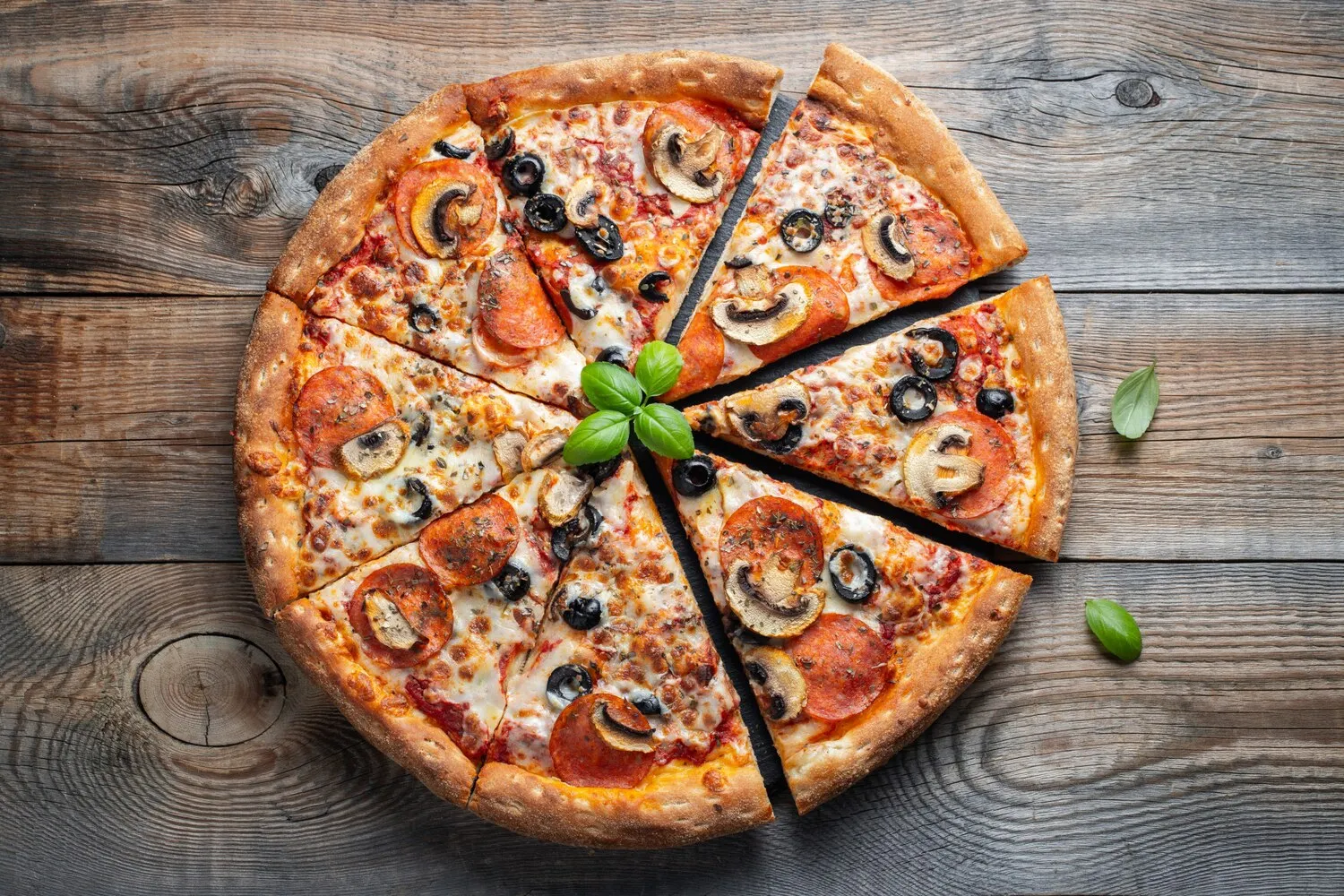
Pizza
They offer a variety of pizza flavors. Check the iFood menu for available options.
Nutrition Facts
* The % Daily Value (DV) tells you how much a nutrient in a serving of food contributes to a daily diet. 2,000 calories a day is used for general nutrition advice.
Pizza's history dates back to ancient civilizations that used flatbreads with toppings. However, the modern pizza, as we know it, originated in Naples, Italy, in the 18th or early 19th century. It evolved from simple flatbreads sold by street vendors to a more defined dish with tomatoes, cheese, and other toppings. The popularity of pizza grew with Italian immigrants in the late 19th and early 20th centuries, especially in the United States.
Pizza has become a global culinary phenomenon and a significant part of popular culture. It's often associated with social gatherings, casual dining, and convenience. The dish has been adapted and customized in countless ways to suit local tastes and preferences worldwide, solidifying its status as a versatile and beloved food.
Social Food
Pizza is commonly shared among friends and family, making it a central part of social gatherings and celebrations. Its format makes it easy to divide and enjoy communally.
Convenience and Customization
Pizza is a popular takeout and delivery option, offering convenience and a wide range of customization possibilities to cater to different dietary needs and preferences.
Regional Variations
Different regions have their own unique styles of pizza, reflecting local ingredients and culinary traditions. Examples include Neapolitan pizza, New York-style pizza, and Chicago deep-dish pizza.
Pizza offers a diverse range of flavors, primarily influenced by the toppings used. The base typically features a savory tomato sauce and melted cheese, which provide a foundation for various combinations of meats, vegetables, and spices. The flavors range from tangy and acidic (from the tomato sauce) to rich and creamy (from the cheese) to savory and spicy (from meats and seasonings).
The dominant flavors in pizza come from the interplay of its core ingredients: the slightly sweet and acidic tomato sauce, the umami richness of mozzarella cheese, and the subtly yeasty flavor of the crust. Depending on the variant, additional flavors may include: savory and salty flavors from pepperoni, sausage, or ham; earthy and aromatic flavors from mushrooms, onions, or garlic; fresh and herbaceous flavors from basil, oregano, or rosemary; and spicy or tangy flavors from chili peppers, olives, or artichoke hearts. The flavors found specifically on iFood may include classic Margherita (tomato, mozzarella, basil), Pepperoni (tomato, mozzarella, pepperoni), Vegetarian (various vegetables), and potentially local specialties or fusion creations. Check the iFood menu for available options to confirm details.
Eat it Hot
Pizza is best enjoyed immediately after being cooked, when the crust is crispy and the cheese is melted and gooey. Letting it cool diminishes its flavor and texture.
Fold it Like a New Yorker
If you're eating a New York-style pizza, fold it in half lengthwise to create a sturdy structure that prevents the toppings from sliding off.
Pair with Drinks
Pizza pairs well with a variety of beverages, including beer, wine, soda, and even sparkling water. Consider the toppings and choose a drink that complements the flavors.
Experiment with Toppings
Don't be afraid to try new and unusual topping combinations to discover your own favorite pizza variations.
Explore additional Pizza dishes and restaurants
Explore PizzaDiscover top dining spots and culinary experiences in Recife.
Explore RecifeLearn more about the food culture, restaurant scene, and culinary heritage of Brazil.
Explore Brazil